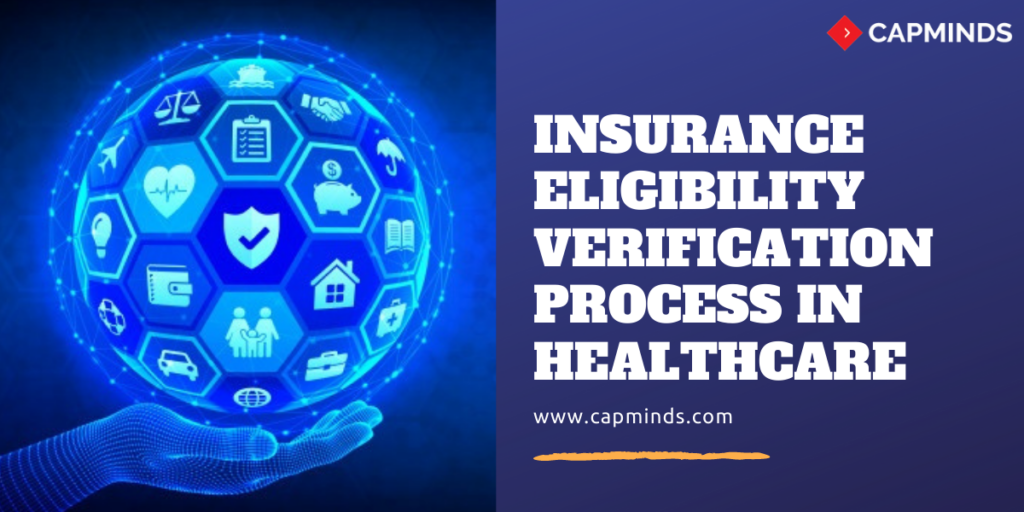Insurance Eligibility Verification Process In Healthcare
Insurance eligibility verification plays a vital role in ensuring accurate and timely receipt of information regarding insurance coverage in revenue cycle management. Most claim denials happen when a patient is ineligible for services billed by the provider.
But, many healthcare providers are not paying specific attention to the insurance eligibility verification process. Not only the healthcare providers but also patients are confused and unaware of how the insurance mechanism works. In this article, we clearly explained the steps and benefits of the insurance eligibility verification process.
What Is Insurance Eligibility Verification In Healthcare?
Insurance Eligibility Verification is the procedure of verifying a patient’s insurance in terms of three different statuses such as coverage status, active or Inactive status, and eligibility status. Insurance eligibility verification is very important as it is directly linked to claim denials or payment delays of a healthcare practice, especially the account receivables (A/R).
RELATED: ALL ABOUT ACCOUNT RECEIVABLE(AR) IN HEALTHCARE
Insurance Eligibility Verification Process
The steps involved in the eligibility verification process take place as follows:
1. Patient Scheduling:
With the help of automated appointment scheduling software, the online scheduling features help streamline the scheduling process to a greater extent. The manual administrative tasks such as appointment reminders through text, call, and mail, and rescheduling of canceled appointments can be automated easily.
2. Patient Enrolment:
Patient information is the core data of the healthcare industry. But the main thing is what the patient health data must include and what should be omitted. For example, the basic information of a patient such as a patient’s name, date of birth, and address are very important as are the diagnosis, allergies, and medical history. The contact information such as patient emergency contact, family doctor, and the insurance provider may be captured elsewhere under specific heads.
3. Eligibility Verification:
The eligibility verification is the most important step in the RCM process. If it is done in the right way, it leads automatically to an increase in the number of clean claims. A smooth insurance eligibility verification process solves major issues like delayed payments, billing errors, and non-payment.
It is important to periodically check the coverage and benefits extended under the patient’s insurance plan. For this, a precise record of patient data must be maintained because any changes like marital status, birth, and divorce can change coverage and benefits. In the whole process, it is a great idea to prompt the patient on benefits like co-pay, and deductibles, and all through organization administrations.
4. Pre-authorization:
Prior authorization is very important in revenue cycle management (RCM) as payers need to confirm whether a particular medication or procedure will be approved. If an insurance company does not approve certain treatments or medical equipment, healthcare providers should wait till they get approval, or else they need to contact the insurance providers regarding the approval process and then perform the necessary steps.
RELATED: 5 TIPS TO HANDLE PRIOR AUTHORIZATION IN RCM
5. Connecting Patients:
All the patient data including basic information, health records, and contact information should be collected prior and should be maintained correctly. If any additional information is required such as medication details, it’s advisable to contact the patients for accurate information.
6. Billing System Update:
The medical billing software is where the patient details including the insurance coverage data are updated. Use the advanced verification system to retrieve the insurance card and verify patient eligibility with every visit to avoid claim denials.
Benefits of Insurance Eligibility Verification
Clean Claim Submission
The accurate eligibility verification process helps the healthcare providers to submit clean claims and helps to avoid claim re-submission, reduces demographic or eligibility-related rejections and denials, increases upfront collections, and results in improved patient satisfaction.
Increased Cash Flow
Updated eligibility verification helps in better claim submission and lesser claim denials. It helps healthcare practices to maintain cash flow through the decrease in write-offs and improved patient care.
RELATED: PROACTIVE MEDICAL BILLING TIPS TO INCREASE REVENUE
Efficient Workflow
Insurance credentialing services help to enhance the entire process of revenue cycle management. An efficient and streamlined workflow will lead to lesser claim denials and an improved patient experience.
Increased Self-Pay Revenue
There will be an increase in the self-pay revenue as patient information is electronically matched with the healthcare database. This helps in helping patients whose “cover” is not known; it helps to submit their claims after cross-checking the eligibility and cover status online, thus streamlining the pay pipeline for self-pay patients.
CapMinds Eligibility Verification Services
- Our insurance eligibility verification services improve A/R cycles
- We receive our workflow through the patient scheduling system, EDI, Fax, emails, and FTP files
- We contact patients via the best channels to get updated insurance information
- We assess automated eligibility verification using our RPA tools
- We Process Medicaid enrolment
- We remind the patient of the POS collection requirements
- Increase cash collections by reducing write-offs and denials




